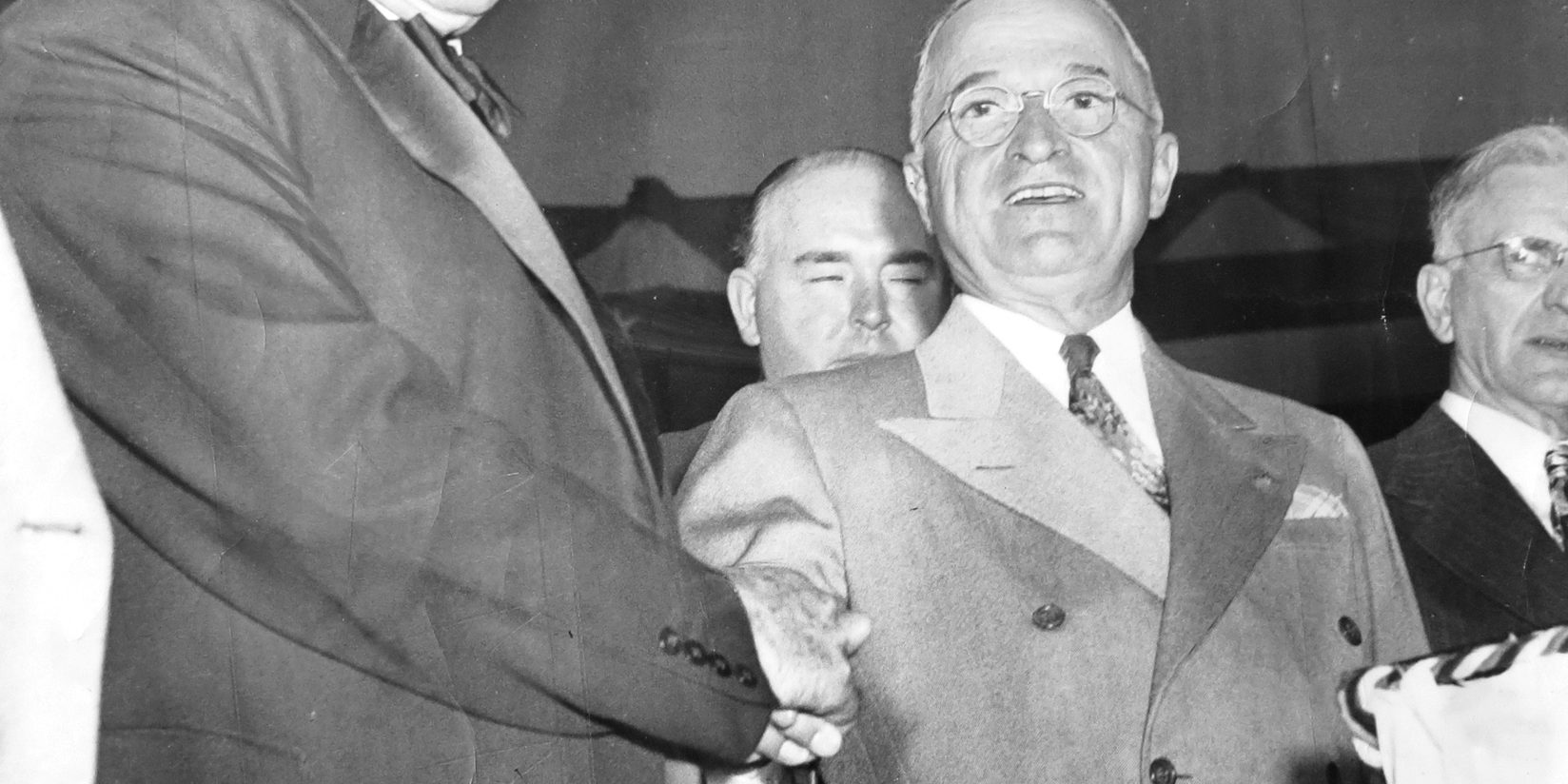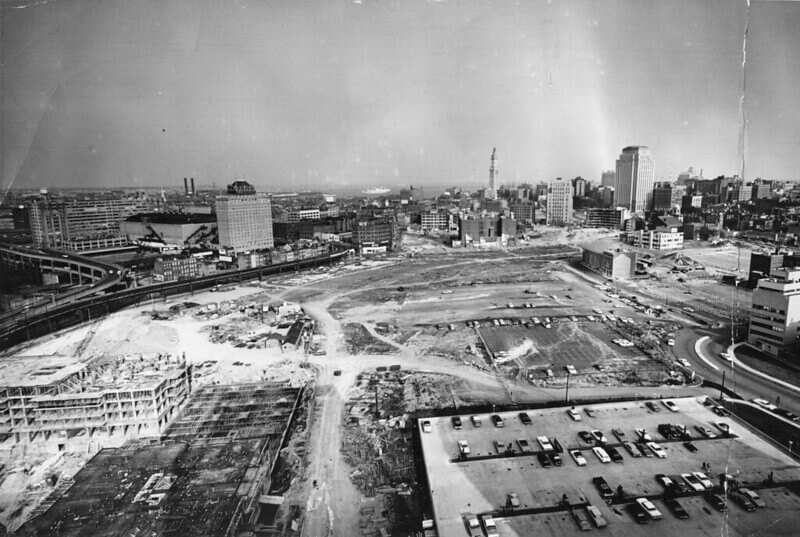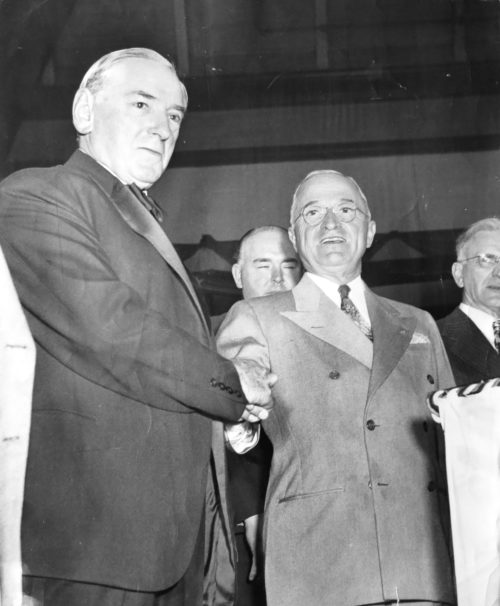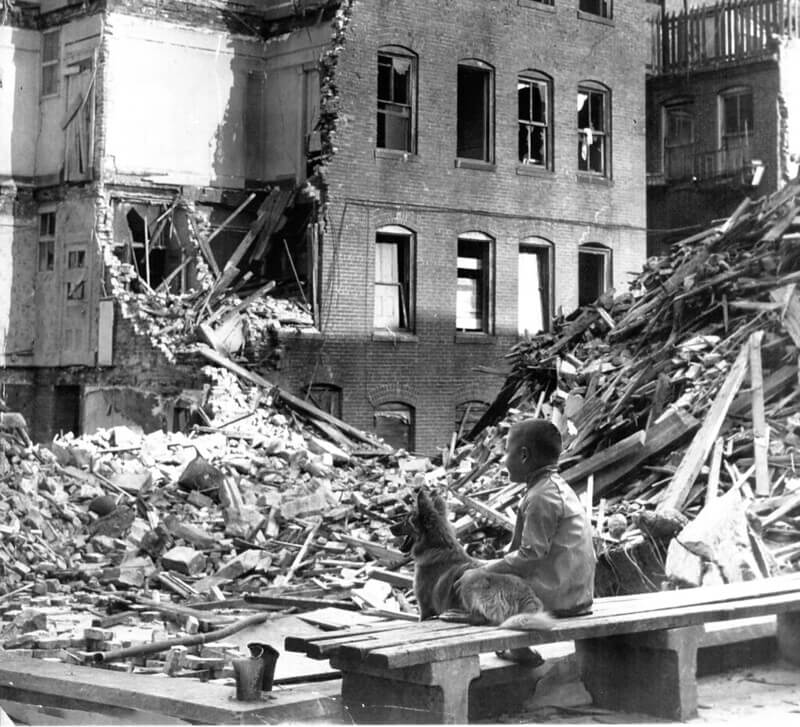The Beginning of the End: The Housing Act of 1949
This exhibit explored the circumstances that led Harry S. Truman to put urban renewal on the national agenda, inadvertently setting in motion the final chapter in the old West End’s story.
The Housing Act of 1949, was a re-configured and updated exhibit that examined the path to the destruction of the Boston’s West End. It explored Democrat Harry S. Truman’s re-election in the face of a mounting housing demand, which prompted him to put urban renewal on the national agenda and set in motion the final chapter of the old West End’s story. The show comprised graphic panels, photographs, and artifacts.
“We reinstalled this exhibit because it gives context to our permanent exhibit, The Last Tenement,” said Museum Executive Director Duane Lucia. “Many people know what happened to the West End, but they don’t know how and why it was facilitated.”
Following WWII and the Great Depression, a severe national housing crisis sparked bitter debate between Republicans and Democrats. During his campaign, Truman seized on the public’s frustration with the lack of progress and blamed the Republican-dominated Congress. The “Do-Nothing Congress,” as he called it, had refused to commit funds to urban renewal during his first term. But following his re-election, Congress returned to Democrat control and earmarked funding for the program. That ultimately led to the demolition of the West End, widely regarded as a dreadful mistake.
“Regardless of how well-intentioned federal urban renewal may have been, the ultimate result for the West End was the complete destruction of a vibrant, tight-knit community and the displacement of thousands of families who called that neighborhood home,” said Lucia, who co-curated this exhibit with Bill Kuttner and Jim Briand.
The Housing Act of 1949 tells the story of the origin of urban renewal, including the legislation that financed the ill-named “slum clearance” in American cities. Ironically the Act fell under Truman’s “Fair Deal” initiative. While envisioned to address the national housing shortage by transitioning families from so-called “slums and firetraps” into safer public housing, the Act failed to recognize the cost of destroying the well-established communities in which these families lived.





